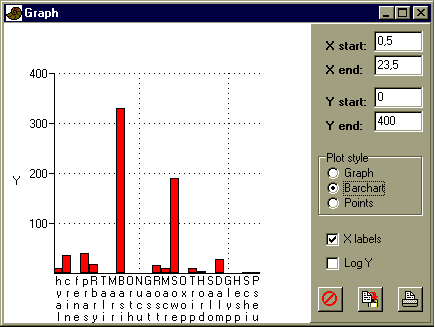
| Case study 8 - Dynamic Llanvirn shelly faunas from Wales - a palaeoecological study |
Data file: llanvirn.dat
Abundant and diverse shelly benthic palaeocommunities have now been described both qualitatively and quantitatively from many parts of the Ordovician System. Such asssemblages, however, are most precisely described, analysed and compared in terms of measurements, statistics and graphics. Benthic palaeocommunities from the Upper Llanvirn of Wales have been assessed in detail by Williams, Lockley & Hurst (1981); a substantial database is available to track the development of these animal associations through many stratigraphical successions.
Data from one section, Coed Duon, focused attention on the faunal changes between two horizons, 6 and 7; here the Upper Flags and Grits is separated from the overlying Ashes and Lavas by an unconformity. In the higher part of the former unit a Sowerbyella palaeocommunity is succeeded by an association dominated by the brachiopod Dalmanella but not apparently at the expense of Sowerbyella.
Data from all ten horizons are stored in llanvirn.dat. Although the study by Williams and his colleagues concentrated on the transition between horizons 6 and 7, this study also assesses the faunal changes between horizons 5 and 6.
Open the file llanvirn.dat. Select column (horizon) 5, and choose 'Graph' in the Plot menu. Set the 'Barchart' and 'X labels' options. Also look at horizon 6:

Compare the compositions of faunas at horizon 5 and horizon 6. Is there a major change?

More information about the diversity parameters can be found in the manual.